Kamaitachi
Eikoh Hosoe
Eikoh Hosoe was a Japanes photographer and filmmaker. He died on September 16 in a Tokyo hospital, 91 years old. He is best known for his dark, high contrast, black and white photographs of human bodies. Hosoe pursued psycologically driven images imbued with a deep and distinctive beauty. Eikoh Hosoe made famous photobooks like Otoko to Onna (Man and Woman), Barakei (Killed by Roses), Kamaitachi and Barakei Shinshuban (Ordeal by Roses Re-edited).
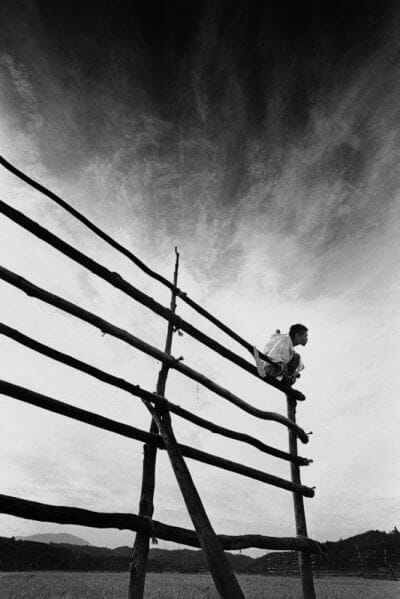
Eikoh Hosoe was born in 1933 as Toshihiro Hosoe. In 1959, Hosoe established the photography agency VIVO alongside members like Shomei Tomatsu and Ikko Narahara to pursue photography different from realism or journalism. His first major photoseries was Man and Woman (1961). At that moment Daido Moriyama worked as Hosoe’s assistant. His series Barakei (Ordeal by Roses; 1961 – 1962) features Japanes author Yukio Mishima. Another wellknown series, Kamaitachi (1969) features butoh dancer Tatsumi Hijikata.

Hosoe first met Tatsumi Hijikata in 1958 when the latter’s company performed an interpretation of Yukio Mishima’s novel Kinjiki (Forbidden Colours), about secret homosexual desire. He began working with Hijikata. First on photographs for Hosoe’s first major collection Man and Woman (1961).

Kamaitachi derives from a journey that Hosoe made to the far north of Japan’s main island after returning home from a European trip in 1964. He travelled with Hijikata to the Tohoku region. Both had been born there, but Hosoe’s parents left soon after his birth. He had, however, been evacuated there as an 11-year old, to escape the firebombing of Tokyo, but he found the episode an unhappy one.
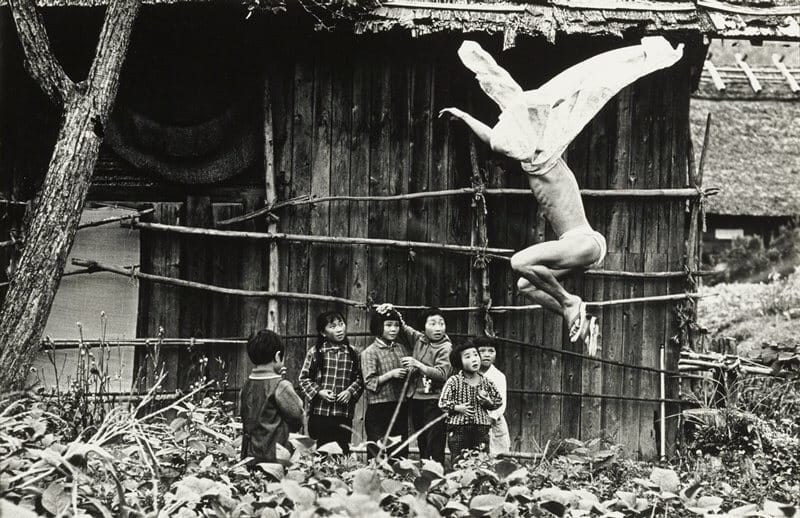
As a young boy in the north, Hosoe heard of the Kamaitachi, a supernatural being who purportedly haunted the area’s rice fields and would slash any person he encountered. On their journey they came upon a great plain of rice fields that triggered Hosoe’s memory, and he conceived the idea of shooting Hijikata in a series of tableaux that recreated the Kamaitachi legend.
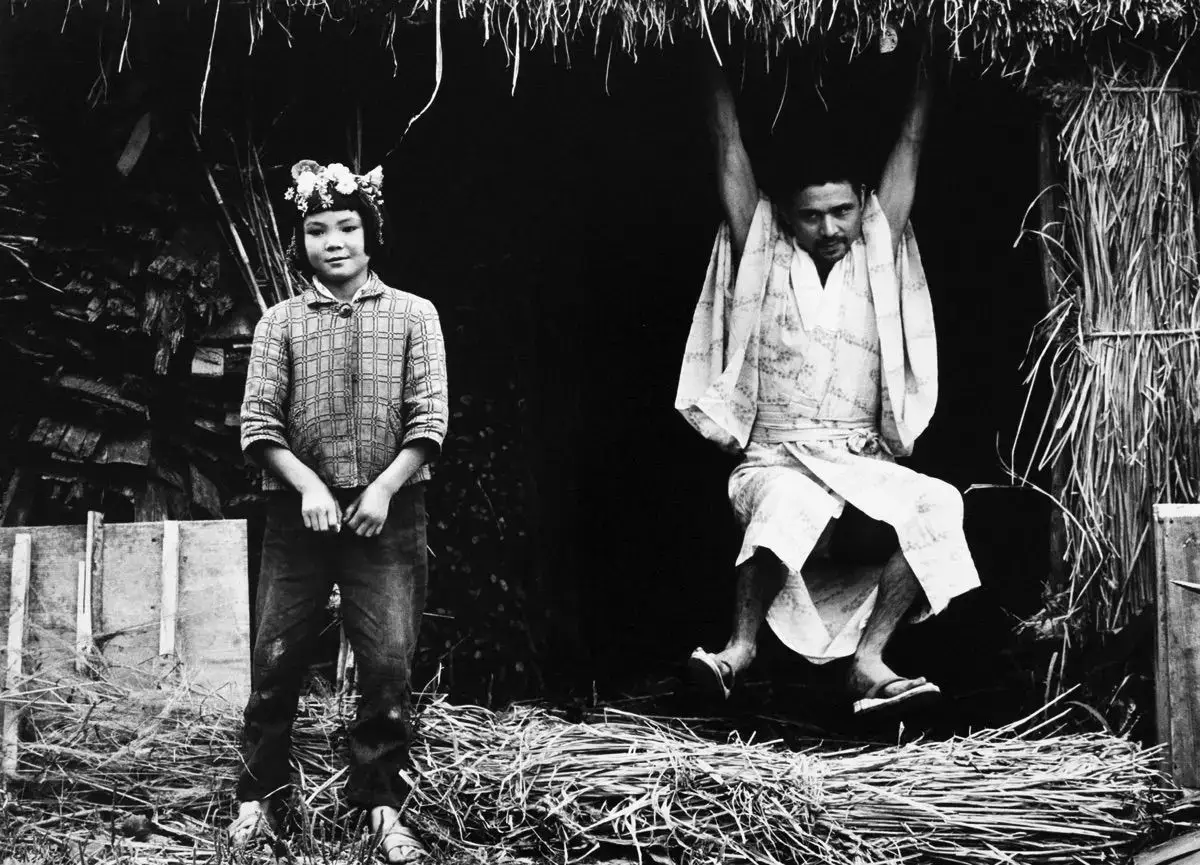
In the photographs, we see Hijikata wandering ghost-like within the stark landscape, confronting farmers and children. Initially playing the role of the Fool. But by the end of the series, we see Hijikata carrying off a young boy. The work follows Hijikata as he carries out dynamic impromptu performances. Hosoe responds to the dancer’s pulsating body and spirit and to the repercussions generated by encounters with local residents. Capturing with an ever more penetrating gaze the feel of the land and the eroticism of life and death.
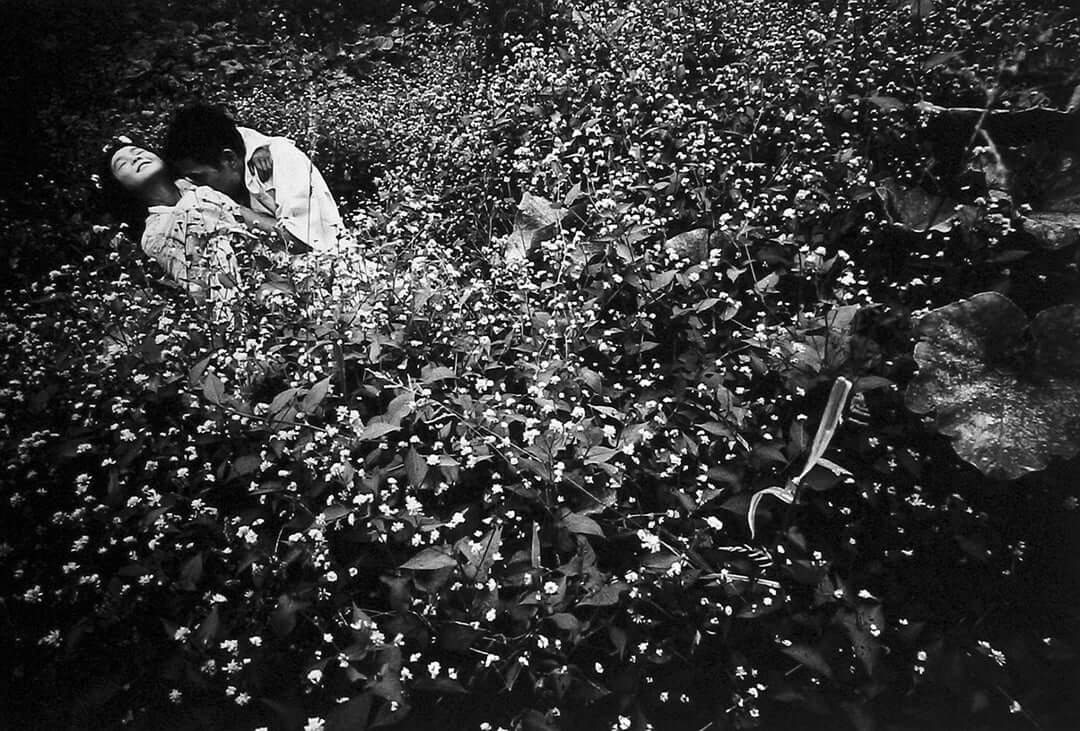
The result was a spontaneous and therefore intensely personal dance drama, a kind of exorcism using the local landscape and people. The Kamaitachi functions as a wild free spirit in a land restricted by tradition. As such, the demon (Hijikata) is at once beguiling and dangerous, representing such impulses as earthiness and sexuality. He seduces women and carries off small children. We see such unruliness throughout the series but most cleary in one of the signature images, of a tiny Hijikata leaping gleefully through a great landscape of paddy fields.
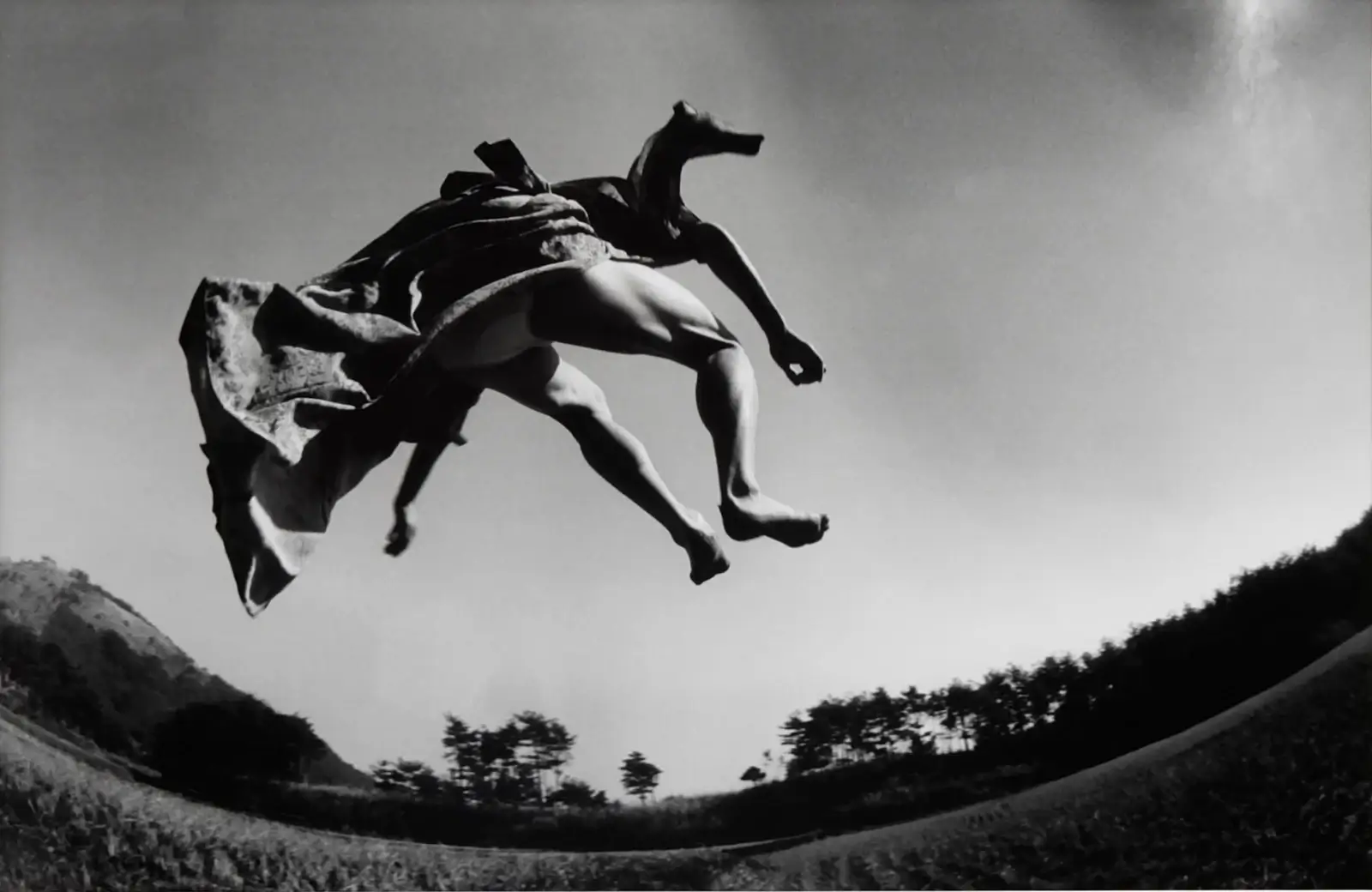
Hosoe might not have been concerned, like many photographers in the 1960s, with contemporary urban life, but to choose tradition as a subject in Japan is an implicit comment on modernity.

Kamaitachi
Photographer: Eikoh Hosoe
Performance: Tatsumi Hijikata
First published in 1969 by Gendai Shichosha
Reprinted in 2005 and 2009 by Aperture
Hardcover, 33 x 25 cm, 112 pages
Considered as one of the greatest photobooks of all time by Source Magazine.
Mentioned in The Photobook: A History Volume 1. Edited by Martin Parr and Gerry Badger.
